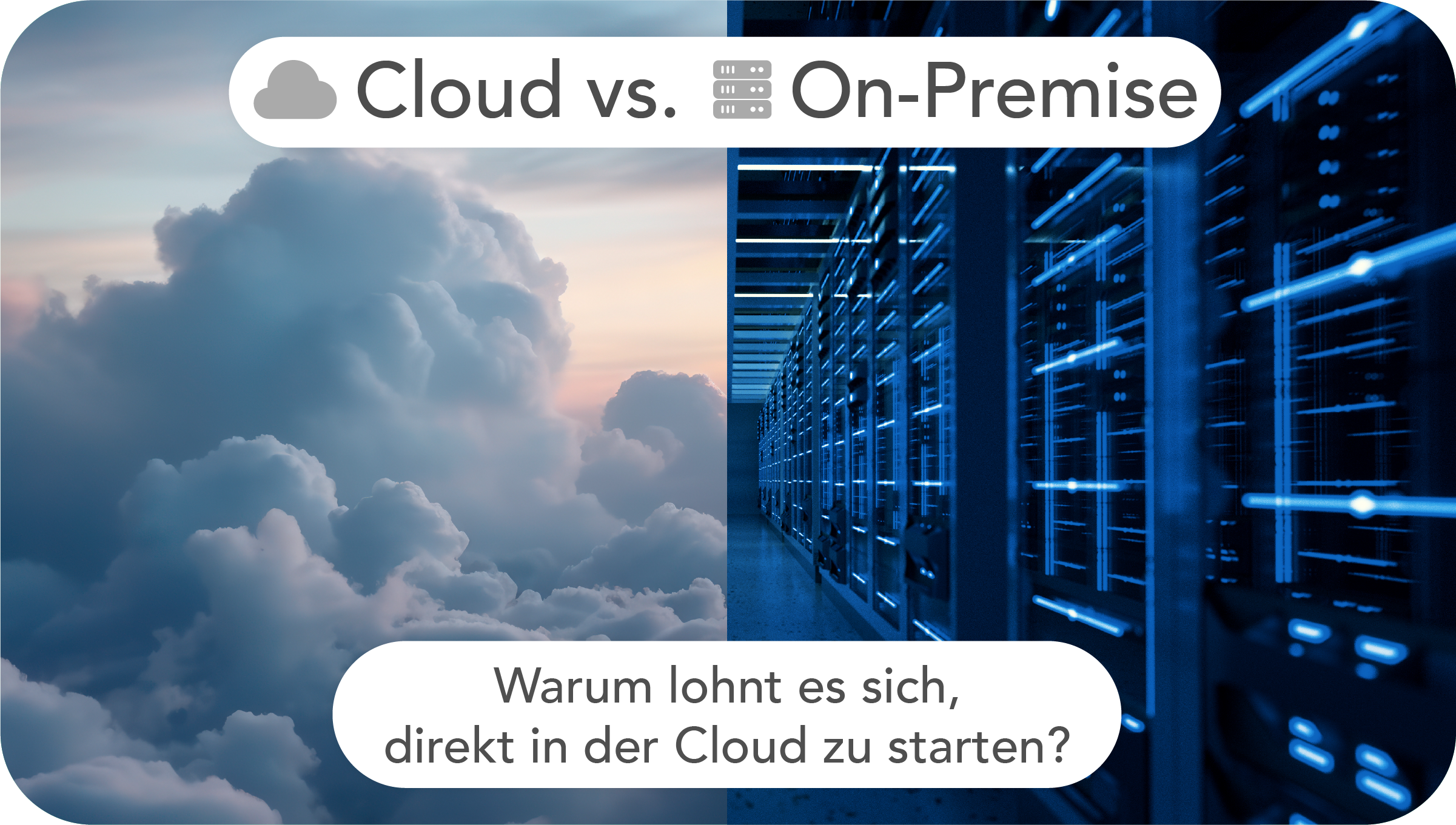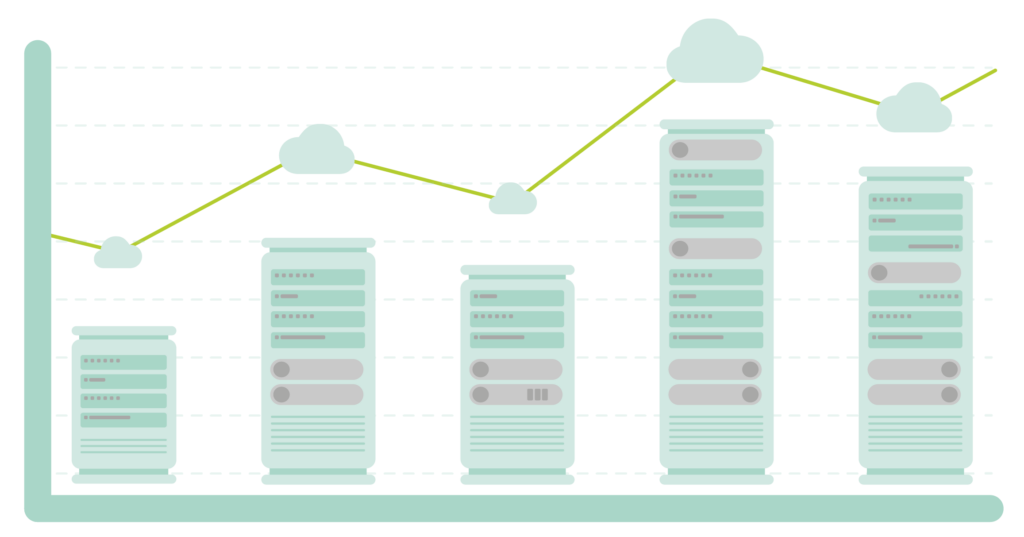
If you want to get started with Atlassian, you first face a choice: Do you want to go to the cloud, or would you prefer to run your own server the old‑school way and use the Data Center (DC) option?
Or do you perhaps already use a DC deployment and are considering a move to the cloud?
Both have their strengths and challenges—so what are they? Which solution fits your requirements better depends heavily on your company and growth plans, as well as your own IT structures. Let’s take a look together!
Get started quickly or plan for the long term?
If you want to get up and running as quickly as possible, the cloud is usually the simpler route. Up to 10 users (depending on the product) can work there for free with the included free features—ideal for gaining initial experience, testing the system, and getting a sense of how well your processes can be mapped. All without significant lead time or upfront investment.
It’s different when starting with Jira Data Center: licenses start at 500 users. This means smaller teams or test environments are not as easy to implement. The trial period is also quite short at 30 days—so you have to decide relatively quickly.
Usability & user experience
The cloud was designed from the ground up for simple, intuitive use. The interface is clear, many functions are self‑explanatory, and typical tasks—such as creating projects, filters, or assigning tickets—can be completed without technical expertise. Ideal for teams that want to get started quickly without extensive onboarding.
Data Center also now offers a more modern interface with visually guided workflows and simplified navigation—so the initial onboarding is significantly more accessible than before. However, the difference shows in depth: DC allows far more extensive configuration, but also requires a higher level of technical understanding. Especially for more complex requirements, custom automations, or integrating external systems, more setup and know‑how are typically required.
In short: the cloud clearly has the edge when it comes to a fast, frictionless start. DC offers more flexibility—but also more responsibility for setup and maintenance.

Operations, maintenance, and availability
With the cloud, you hand over all hosting to Atlassian, optionally just specify the region and you’re good to go! Maintenance, updates, backups, and security are centrally managed—with the right plan, with a guaranteed uptime of 99.99 %.
This significantly reduces the workload for your internal IT and lets you focus on using the system, not operating it.
In DC, by contrast, you retain full control over your systems. You decide where your data is stored, what security standards apply, and how the system is hosted. For companies with specific data protection policies or significant compliance obligations, that can be the decisive factor.
However, this also requires a truly well‑designed internal infrastructure.
Both models can, incidentally, be operated in a GDPR‑compliant manner—the key is simply that the technical and organizational measures are implemented properly. We are happy to support you with this.
Functionality & extensibility
The cloud is often one step ahead: new features such as automations, knowledge base, or Forms are integrated out of the box—no plugin, no setup, no updates you have to run yourself. This speeds up the start and noticeably reduces configuration effort.
Data Center also has a strong feature set—and as of JSM 10.3, ProForma is a built‑in component. If you want deeper customization, you can, as in the cloud, access the Atlassian Marketplace. In both variants, powerful extensions, including from third parties, can be integrated—though in the cloud they’re often not even necessary.
Conclusion: The cloud offers many features ready to use—and is therefore especially convenient. DC can be expanded just as flexibly, but requires more administrative work behind the scenes.

Keeping an eye on scaling & costs in view
With the cloud, you stay flexible: User licenses can be adjusted monthly—ideal if your team is growing, projects fluctuate, or you simply want to stay agile. Thanks to the subscription model, in which you are billed per user, you pay only for what you actually need—with no additional costs for servers, hosting, or maintenance.
Data Center relies on fixed license tiers (starting at 500 users) and is particularly suitable for companies with a stable, long‑term IT setup. The cost structure is more comprehensive: in addition to the license, there are expenses for infrastructure, hosting, and administration. In return, you retain full control over your environment—which can pay off especially if you already have infrastructure and a well‑established IT team.
Conclusion: Which benefits your company more?
Ultimately, it depends on what you need: a fast start, less administrative effort, and easy scaling? Then the cloud is the right choice. Maximum control, your own IT infrastructure, and deeper configuration options? Then it’s worth looking at Data Center.
And if you’re still not sure which option is right for you: we’ll be happy to advise you—independently and with practical guidance. Together, we’ll find the Atlassian solution that best fits your requirements and goals.